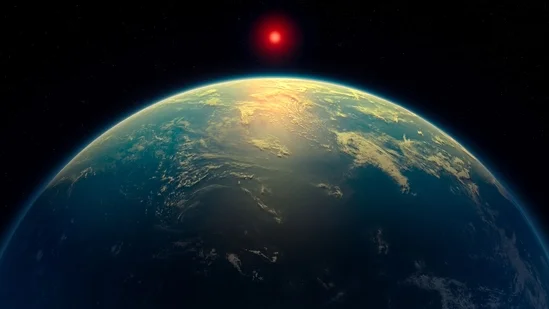
Supercomputer Predicts the End of Life on Earth: It’s Not What You Think
Forget asteroids and nuclear war! A recent study using supercomputers has painted a startling picture of Earth's far future. NASA scientists, in collaboration with researchers from Japan’s University of Toho, have modeled the ultimate fate of our planet, and the results are both fascinating and a little unsettling. The study pinpoints the Sun as the eventual cause of Earth's demise, but not in the way you might expect.
Instead of a fiery explosion or a direct solar flare, the culprit is a gradual increase in the Sun's output, leading to a critical depletion of oxygen in Earth's atmosphere. This research provides a timeline for the end of life as we know it, projecting that around the year 1,000,002,021, surface conditions will become too extreme to support life, even for the most resilient organisms.
However, the decline won't be sudden. The study, published in Nature Geoscience, suggests that the initial signs of this transformation are already becoming apparent. Solar storms and coronal mass ejections are increasing in intensity, impacting Earth's magnetic field and subtly reducing atmospheric oxygen. Think of the most powerful solar storm in the last 20 years – it’s just a glimpse of what’s to come on a much grander scale.
Human-driven climate change is also compounding the issue. Rising global temperatures and melting polar ice are accelerating faster than previous projections, potentially hastening the environmental stress on the planet.
The researchers at Toho University, led by Kazumi Ozaki and Christopher Reinhard, used complex planetary and atmospheric simulations to understand how Earth’s climate and chemical makeup will change over time. They discovered that the increasing heat from the Sun will cause more carbon dioxide to break down, which in turn will significantly impact plant life, as they rely on CO2 for photosynthesis. With fewer plants, oxygen levels will plummet.

What does this mean for the future? One billion years from now, Earth's atmosphere would resemble its state before the Great Oxidation Event, approximately 2.4 billion years ago. It could become an atmosphere rich in methane and with very little oxygen.
While a billion years seems like an eternity, scientists emphasize the need for preparation and adaptation. Some are proposing technological interventions, such as enclosed life-support systems and artificial habitats, to extend the habitable environment for as long as possible. Others are looking beyond Earth, with ongoing plans for long-term space colonization, especially Mars missions spearheaded by NASA and SpaceX, explored as future backup plans.
The findings from this study serve as a stark reminder of the complex and fragile nature of our planet's systems and how they can change over vast stretches of time. It also compels us to think critically about the longevity of our species and our responsibility to preserve the conditions that sustain life. Is humanity ready for this challenge?
What are your thoughts on this projected timeline? Share your opinions and potential solutions in the comments below!